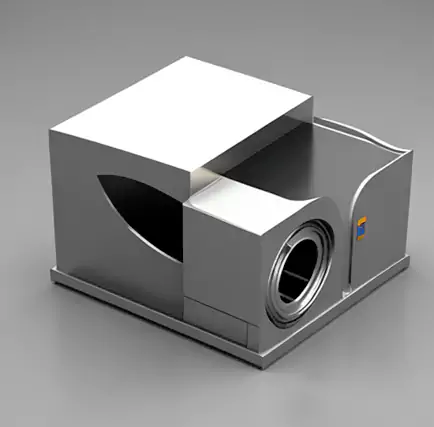Vacuum Casting, also called vacuum injection molding is widely used in rapid prototyping. The process uses vacuum pressure to make liquid material flow into the molded from high-precision, complex parts. In this article, we will explain the vacuum casting process in detail. We will also discuss its specialized applications in different industries.

Vacuum casting process
1. Mou ld making
Master Model: Firstly, a high-precision master model is made by 3D printing, CNC machining o, or other rapid prototyping techniques. The Master Model is usually made of durable and stable materials such as ABS, polyurethane, etc.
Place the Master Model into a special frame. Pour liquid silicone into the frame and defoam it. This ensures the silicone completely covers the Master Model without air bubbles. After the silicone cures, cut the silicone mold Remove the Master Model to form an accurate negative mould.
2.MMaterialpreparation
Liquid Resin: Choose the appropriate liquid resin material based on the requirements, such as polyurethane resin or epoxy resin. These materials flow well and cure quickly. They can be molded in a short time.
De-foaming Treatment: Before casting, remove the air bubbles from the liquid resin. This step ensures the density and strength of the final product.
3. Pouring process
Vacuum environment: Place the silicone mold in the vacuum chamber. Pour the liquid resin into the pouring port. The vacuum creates negative pressure, which makes the liquid resin more fluid. This helps the resin fill the mold cavity quickly and prevents air bubbles.
Curing moulding: Maintain the vmoldingironment while the resin cures in the mould. The curing time depends on the resin material. It can range from a few minutes to several hours.
4o mini
4. Dem molding and post-processing
Demoulding: Once the resin fully cures, open the vacuum chamber. Remove the silicone momoldCarefully take the finished product out of the mould.
Post-treatment: Perform necessary post-treatment processes according to the product requirements. These processes include deburring, sanding, and painting to meet the final product specifications.

Vacuum casting applications
1. Rapidd prototyping
Verification of design: Vacuum casting quickly produces highly accurate prototypes to verify product design and functionality. This helps develop and iterate new products.
Market testing: Vacuum casting quickly produces a small number of products for market testing. This allows companies to gather market feedback before starting formal mass production.
2. Smalll batch production
Reduce costs: Vacuum casting is a cost-effective manufacturing method for products that require small batch production. It avoids high mold or small-batchs.
Shorten the cycle: Vacuummolding has a short production cycle. It can quickly respond to market demand and shorten the time to market.
3. Ccomplexx parts manufacturing
High precision: Vacuum casting produces parts with complex geometry and fine details. It is widely used in electronics, medical, aviation, and other high-precision industries.
Multi-material selection: Vacuum casting meets the special needs of different fields by choosing different types of resin materials. These materials offer characteristics such as high temperature resistance, corrosion resistance, and insulation.

Advantages and Challenges of Vacuum Casting
1. Advantages
High precision and complexity: Vacuum casting manufactures parts with high precision and complex shapes. It can achieve an accuracy of up to ±0.1mm.
Flexibility: Vacuum casting applies to a variety of resin materials. You can select materials flexibly based on demand to achieve different part performances.
Rapid and efficient: The process, from mold making to the finished product, has a short cycle time. It is suitable for rapid prototyping and small-batch production.
2. Challenges
The choice of materials is limited. Currently, manufacturers mainly use polyurethane resin. The application of materials with special properties is also limited.
SSilicone mold has a short service life. Manufacturers usually need to replace them after 20-50 castings. This increases the cost of long-term mass production.
The process is complicated. Professional equipment and technicians are necessary for operation. The production environment also has high requirements.

Future Prospect
As science and technology advance, and material science develops, vacuum casting technology will improve its accuracy, material selection, and production efficiency.
In industrial design, medical devices, aerospace, and other fields, vacuum casting will play a more important role. It will promote the manufacturing industry toward greater efficiency and accuracy.
Conclusion
Vacuum casting is an efficient and flexible rapid prototyping technology with a wide range of applications. Continuous technological innovation and process optimization will enable vacuum casting to provide more high-quality parts and components. This will help product development and enhance market competitiveness.
